In the keynote speech at Panasonic Convention 2010, Bill Foster from Futuresource Consulting presented a persuasive argument in favour of 3D TV, and I happen to agree with him (for the most parts). The images below contain the highlights of the event, which are relatively self-explanatory.
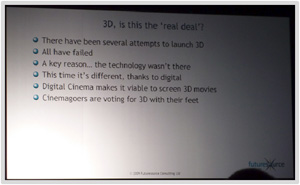 |
3D, is this the “Real Deal”?
|
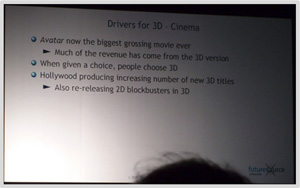 |
Drivers for 3D: Cinema
|
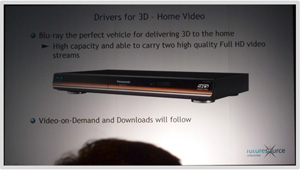 |
Drivers for 3D: Home Video
|
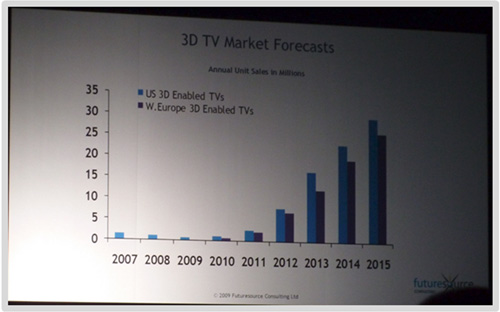 |
|
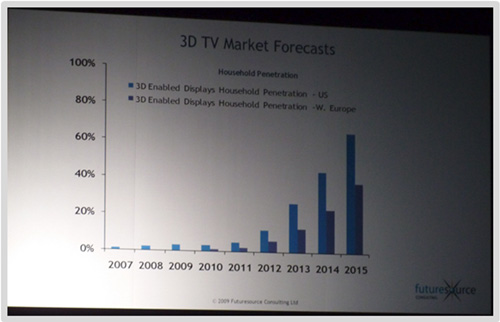 |
|
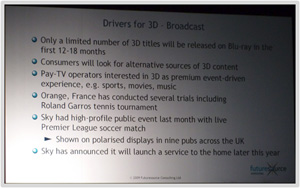 |
Drivers for 3D: Broadcast
|
The majority of us who are in the know are aware that 3D is nothing new. It is in fact older than our great-grandparents, and the reason for its continued failure was due to a number of factors. The primary obstacle however was the analogue domain, as it was difficult to capture, edit, master and display large sequences of 3D via film without inducing any serious adverse effects to the audience.
The method of perception was also limited to linear polarized filters and anaglyph 3D, which failed to win the hearts and minds of the mass audience. Furthermore, it was not possible to produce high-quality 3D on consumer grade-CRTs due to flicker and limited resolution among other factors.
The ColorCode system widely used in the US and recently used by Channel 4 to promote 3D is an improved version of the anaglyph, but even such undertaking failed to produce the level of quality required to satisfy the average consumer.
As time flowed, the thrust for 3D did not diminish, but the hardware simply was not capable until now. Between 2005 and 2009, we’ve witness numerous technological transformations across multiple fields. Flat panels became widely accepted, GPUs for the first time were able to compute general purpose coding (limited maybe but a step in the right direction to help reduce rendering time), cinemas upgraded the age-old mechanical film to digital (and enabled rich digital contents), and so forth. It is the combination of such technologies and the quality of the content which can be created that is powering the re-imagined 3D dream.
Note: This is the first of our 4-part article series which looks into 3D TV technology. In our next article, we’ll outline the 3 key challenges hindering 3D uptake.

Show All Comments